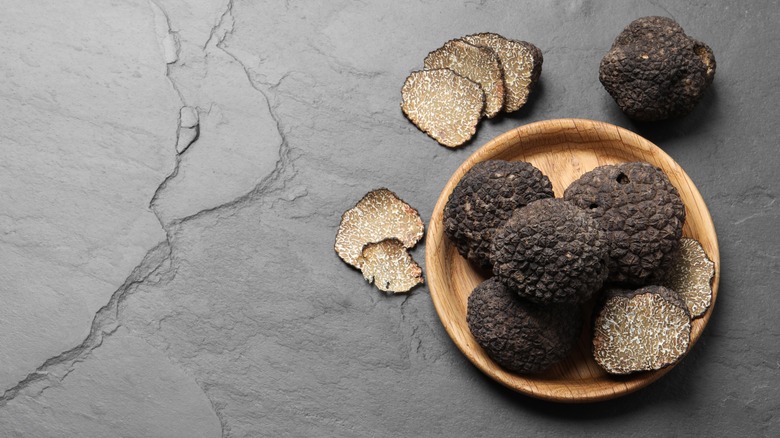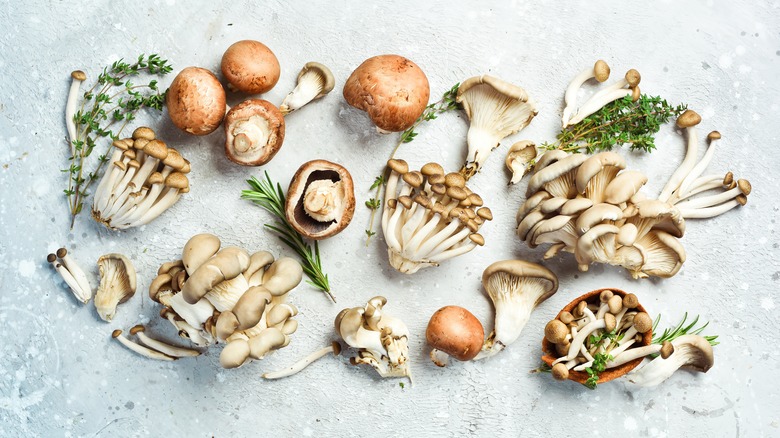Truffles Vs. Mushrooms: What's The Difference?
Truffles and mushrooms are some of the most beloved ingredients of both diners and chefs alike. Aside from being incredibly delicious, R&R Cultivation explains that the foraged fare can also be visually appealing and even increase the depth of a dish by adding flavor and texture. Often confused for one another, the two woodsy ingredients might seem similar, but they couldn't be more different — let us explain.
Both ingredients are part of the fungi kingdom. Pedemontis explains that truffles (which are part of the tuber genus) are technically mushrooms as they live in symbiosis with other organisms, absorbing nutrients from decomposing matter in the soil. They also reproduce through the production of spores, much like traditional fungi. Naturally, both have a characteristically earthy musk; as a result, truffles tend to have an oakier, nuttier taste that varies from mushrooms, which exhibit meaty, umami-like flavors. But the flavor isn't all that differentiates truffles from mushrooms.
The differences lie in composition, cultivation, and cost
Although both can be found deep in the depths of flourishing forests, mushrooms are found above ground, whereas MasterClass notes that truffles are hidden below ground. Likewise, most mushrooms have a stalk and disc-shaped cap, in comparison to truffles that look like lumpy rocks, protecting a gorgeously marbled interior.
Despite the fact that mushrooms can be easily found in a range of environments, Eataly explains that truffles only thrive in specific terroirs with just the right moisture, minerals, and pH levels — think of truffles as the Goldie Locks of the fungi kingdom. Since truffles are particularly fickle, they also aren't able to be cultivated like mushrooms. That's why when truffle hunters take to the forests and find the very scarce delicacy, it merits a heftier price tag than most mushrooms.
Additionally, just because truffles are fungi, that doesn't mean they should be cooked in the same ways. Mushrooms are excellent when served raw, baked, fried, or sautéed and can often be used as the focal point of a dish. However, Allrecipes recommends shaving or grating truffles and using them as more of a garnish since cooking the earthy spores can often unpleasantly warp their flavor and aroma.

